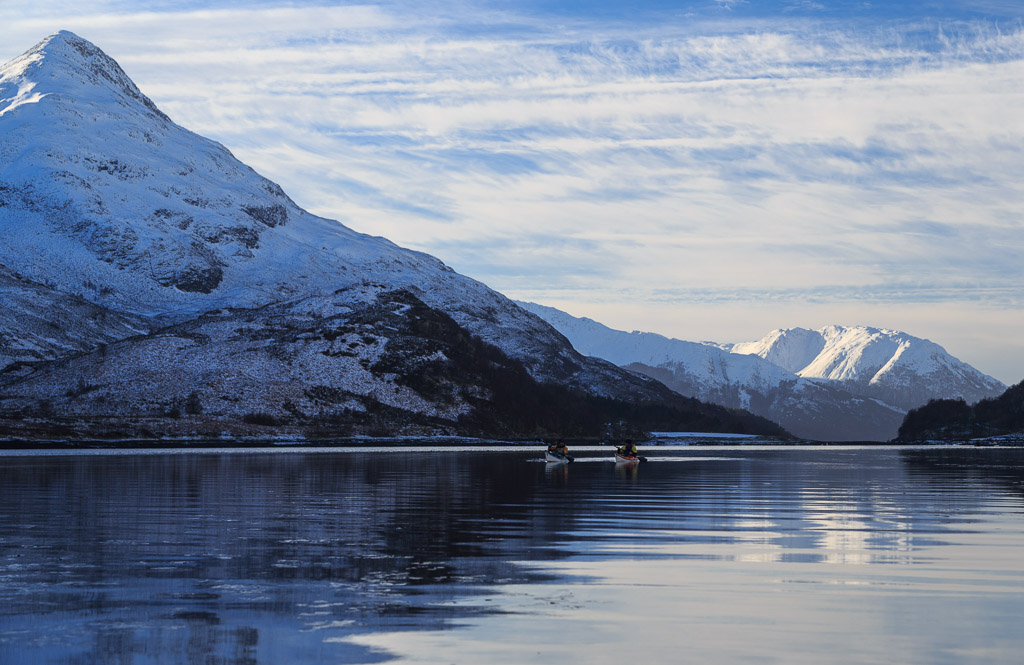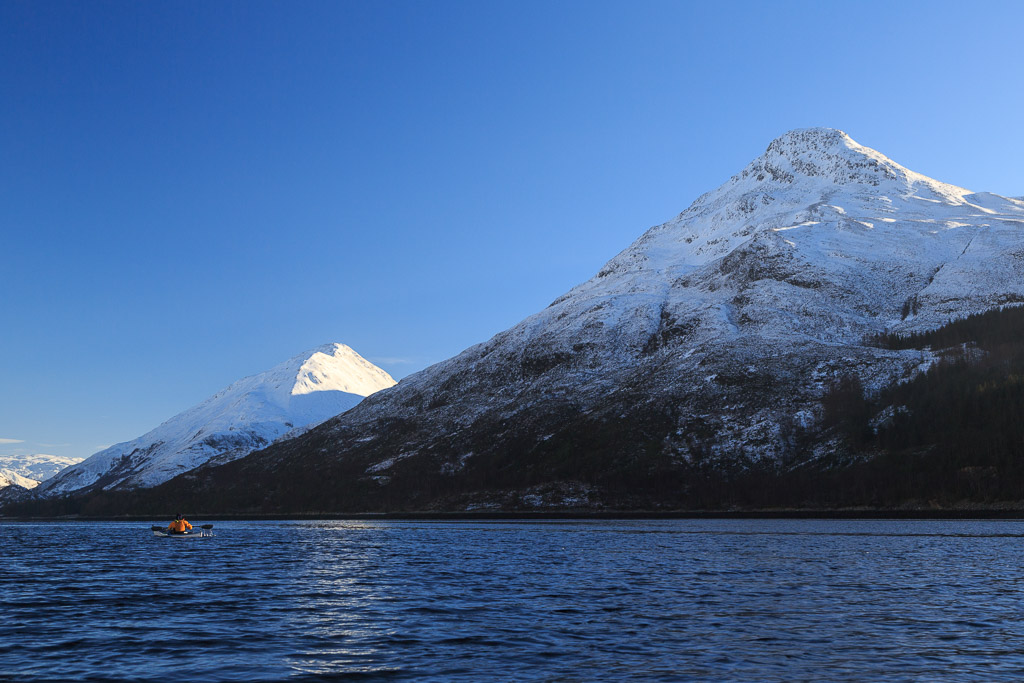...paddled across to the Isles of Glen Coe where we drifted through...
.... narrow channels as the weak and dying.sun did its best to generate a sunset.
In the gloaming we found ourselves paddling past the largest, Eilean Munde, . Many think the Gaelic means "island of the dead" but it is actually named after St Mundus who came here from Iona to found a church in the 7th century. An alternative name, Eilean Nam Mairbh does mean Isle of the Dead, This spot was the shared burial ground of three warring clans, the Stewarts, the MacDonalds, the McInnesses and the Camerons. At least they were united in death. A cold wind got up and moaned mournfully through the trees and tombstones that stand on this lonely rock. We left the silent tombs to the gathering darkness...
The wind was local to the islands and soon petered out so the sails were furled and we got our heads down for the...
...paddle back through the Ballachulish narrows. The tide was flooding in at 5.5 knots but we enjoyed a helpful eddy all the way back to the slipway and the hotel. After a hot bath we reconvened for frothing pints of sports recovery drinks and as we enjoyed our Cullen Skink soup, mussels and shanks of lamb we knew we would never again be as cold as absolute zero degrees Kinlochleven.
Loch Leven is certainly worth an explore, especially in winter. Snowy mountains, wooded isles, history and strong tides, what more could you ask?





















































